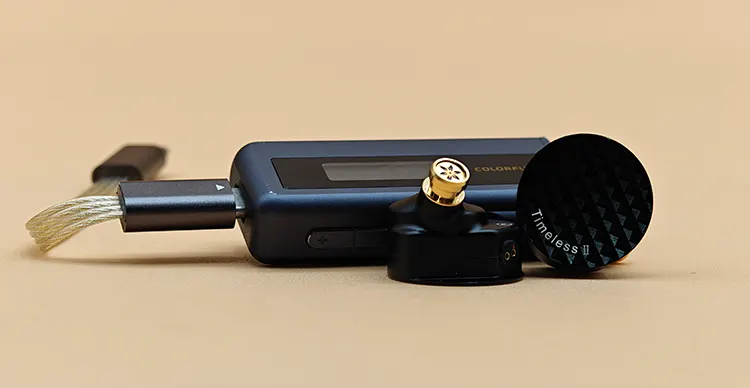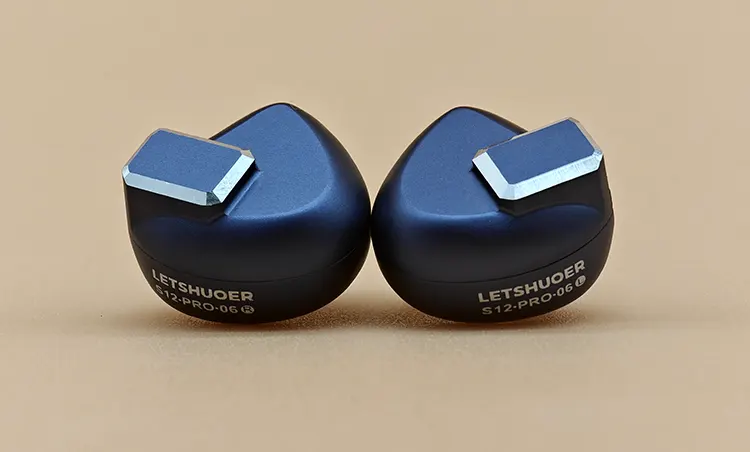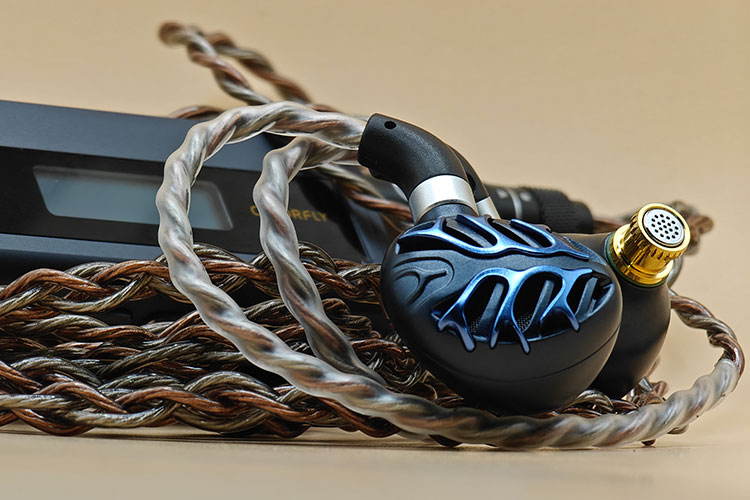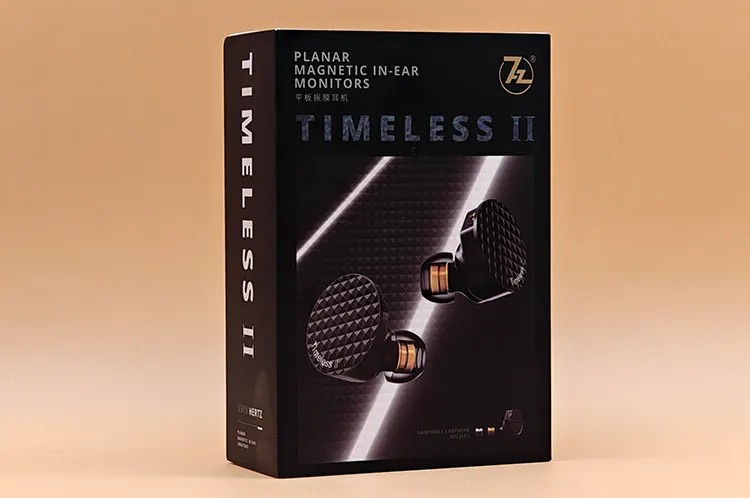Synergy
Efficiency
The 7Hz Timeless II features a sensitivity of 108 dB/mW and an impedance of 15.2Ω, making it relatively easy to drive with most devices. It doesn’t require a dedicated amp or DAP to achieve satisfying performance, though it surprisingly scales well with higher-quality sources.
At lower volumes, the subbass becomes noticeably muted, but the midbass manages to stay present and impactful. This is unusual, as sub-bass typically retains more presence at low volumes, yet the Timeless II maintains its midbass punch effectively.
Similarly, the midrange remains clear and textured, with vocals staying engaging and natural. The treble similarly retains its detail and sparkle, ensuring instruments like cymbals and backing vocals stay present without becoming lost.
Using a balanced 4.4mm jack is recommended as the Timeless II showcases noticeable improvements in dynamic range. However, its performance is still excellent with a 3.5mm single-ended jack that most users can enjoy without additional gear.
Pairings
Using the 7Hz Timeless II with a device equipped with a 3.5mm jack provides a consistent and adequate listening experience. The sound doesn’t change much, though I had to raise the volume slightly to get my ideal bass performance.
Pairing it with the Colorfly CDA-M2 DAC on a 4.4mm balanced output gave the mids extra clarity. Vocals became sharper and more detailed, leaning toward a more analytical sound but losing some of the warmth and body I usually prefer.
When I switched to the HeartField R1, an R2R portable DAC/amp, it completely changed how the Timeless II sounded. It added the necessary weight and richness to the vocals I was looking for, making them feel more intimate and musical in a way the other sources couldn’t match.
Sources aside, using the silver flower nozzle gave the ideal experience I looked for by boosting the note weight of vocals and instruments, increasing the overall warmth. It also slightly pulled the vocals back, creating a sound that felt more bass-focused and balanced overall.
Select Comparisons
LETSHUOER S12 2024 Edition
Technical
The LETSHUOER S12 2024 Edition is a refreshed version of the S12 Pro, featuring upgraded drivers and accessories in celebration of their 8th anniversary.
As a limited-edition release, it builds on the success of the original S12 Pro, one of the most well-received planar IEMs.
A large custom-built 14.8mm planar magnetic driver powers it, improving upon the performance of the S12 Pro driver. It retains the original’s strengths while enhancing resolution and overall dynamics for a refined listening experience.
Design
LETSHUOER chose an all-gold aesthetic for this anniversary release, applying the gold-and-black theme across the IEM, cable, and accessories. This cohesive design makes the S12 2024 Edition stand out visually, aligning with its limited-edition status.
The S12 2024 Edition retains the same shell shape as the S12 Pro but slightly increases its size to accommodate the larger driver. A two-tone finish distinguishes the design, with the gold-coated faceplate contrasting the black opaque body of the shell.
On the back of the shell, a numbered marking identifies each of the 2,024 units produced, adding a touch of exclusivity. However, with only one vent on the shell to alleviate pressure, the design may not provide optimal comfort, especially during extended use.
Performance
The 7Hz Timeless II and LETSHUOER S12 2024 Edition strikingly have similar strengths, making this a tough comparison. I tried using different nozzles for the Timeless II and found the silver flower nozzle to deliver the best sound for this comparison.
The Timeless II has one of the best planar bass responses I’ve heard, but the S12 2024 takes the crown in being a sub-bass king. Its larger driver delivers a deep rumble and booming experience that makes the Timeless II’s sub-bass feel weak and more restrained in comparison.
Midbass is where the Timeless II strikes back, offering a punchier and more refined delivery. The S12 2024’s midbass tends to blend with its sub-bass, creating a thicker sound but lacking the separation and clarity the Timeless II provides effortlessly.
The midrange is a clash of strengths, with both IEMs delivering exceptional timbre that few planar IEMs can match.
Their vocal presentation sets them apart, with the Timeless II occasionally leaning toward a sharper, harsher tone, while the S12 2024 maintains a consistently smooth and inoffensive delivery across all tracks.
Treble is an easy win for the Timeless II, offering better extension, sparkle, and overall detail retrieval that the S12 2024 can’t quite replicate. The darker and more relaxed treble of the S12 2024 doesn’t reveal the same level of nuances as the Timeless II.
The soundstage tells a similar story, with the Timeless II delivering a wider, more layered experience. The S12 2024, though competent, feels more intimate and compact, unable to match the expansive presentation of the Timeless II.
TRN Azure Dragon
Technical
The TRN Azure Dragon is powered by a single second-generation 14.6mm flagship planar diaphragm. This custom-made driver is designed to enhance detail retrieval and improve soundstage capabilities to achieve a more natural tone.
Its planar driver employs a dual-sided array magnet structure, utilizing 7+7 N52 neodymium magnets for greater magnetic flux.
The diaphragm is extremely thin and lightweight, which contributes to quicker transients and faster response times, ensuring a more dynamic listening experience.
Design
The TRN Azure Dragon is inspired by an azure dragon’s head and features a striking blue and black color scheme. Its semi-open back design, while not truly open, acts like a vent to alleviate ear pressure during extended use.
The faceplate’s scale-like design adds a unique aesthetic that stands out from typical IEM designs. Near its 0.75 mm termination, a single line of text reads “Flat Diaphragm (R)/(L)” to help with cable plugging.
Additionally, the nozzles are removable, with three sets provided that change the sound. One set of nozzles is pre-installed, making it ready for use straight out of the box.
Performance
Both IEMs include extra nozzles for sound tuning, but I used the stock nozzles for this comparison. This keeps things fair and focuses on how they perform right out of the box.
The Timeless II continues to deliver some of the best planar low-end performances out there, with a deeper sub-bass rumble and more impact than the TRN Azure Dragon’s leaner low-end.
The midbass follows the same pattern, with the Azure Dragon missing that satisfying thump the Timeless II provides.
Both IEMs keep the midrange neutral, avoiding a presentation too bright or dark. That said, the Timeless II’s slightly thicker note weight gives it a more natural timbre compared to the Azure Dragon’s lighter, leaner presentation.
Treble is where their differences start to show. The Azure Dragon leans into a smoother, more relaxed tone that the Timeless II trades for a harsher treble with greater extension.
That same extension allows the Timeless II to dig up details the Azure Dragon misses. Meanwhile, the Azure Dragon eases away from the sharpness and takes a gentler approach, offering a smoother and more laid-back tone.
Soundstage is where the Timeless II pulls far ahead. Its wider and more immersive staging makes separation cleaner making the Azure Dragon’s smaller stage feel more constrained and less engaging.
My Verdict
The 7Hz Timeless II successfully carries on the legacy of the original Timeless, setting a new standard for affordable planar IEMs. It sets a high bar that other planar options will have to work hard to surpass.
Everything about it feels well thought out, from the unboxing experience to the accessories, cable, and tuning.
With its fast yet impactful bass, natural and detailed mids, and treble extension that takes things up a notch, the Timeless II is an easy pick to add to anyone’s collection.
7Hz Timeless II Technical Specifications
- Driver Type: One (1x) 14.5mm Planar Magnetic Driver
- Plug: 0.78mm 2-pin with a modular 3.5mm single-ended and 4.4mm balanced termination
- Frequency Response: 5Hz – 40kHz
- Impedance: 15.2-ohms
- Sensitivity: 108db/V@1KHz








